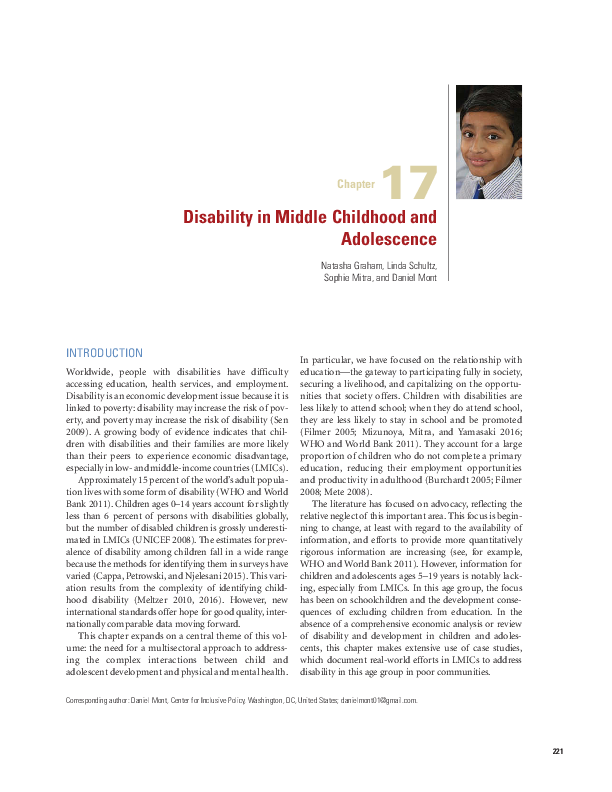
DCP Chapter 17: Disability in Middle Childhood and Adolescence
Publication year:
2017
English
Format:
pdf (182.3 KiB)
Publisher:
The World Bank Group
There is a need for a multisectoral approach to address the complex interactions between child and adolescent development and physical and mental health, focusing in particular on their relationship with education. Children with disabilities account for a large proportion of children who do not complete a primary education, the gateway to participating fully in society, securing a livelihood, and capitalizing on the opportunities society offers. Barriers to education may involve inaccessible facilities, teacher capacity, curriculum design, or environmental barriers. Inclusive education rests on the belief that all children can learn and should have access to a curriculum and necessary adaptations to ensure meaningful educational attainment. Case studies document real-world efforts in low- and middle-income countries (LMICs) to address disability in education, including (1) the provision of free eyeglasses for visually impaired children; (2) the development of the standardized measures of disability; (3) disability-inclusive school health and nutrition programs; (4) early childhood monitoring to screen for disability; (5) providing inclusive education for autism spectrum disorders; and (6) targeting HIV prevention and sexual health education for young people with hearing loss.
>> Press here to return to the Disease Control Priorities (3rd Edition) Start Page
Read full abstract
Authors
View & Download
English
1 Documents
Document information
Publisher
Format
Rights
© Author/Publisher
Found a mistake? Help us improve!
If you have noticed a document assigned to the wrong author or any other inaccuracies, let us know! Your feedback helps us keep our data accurate and useful for everyone.
Share
Link
